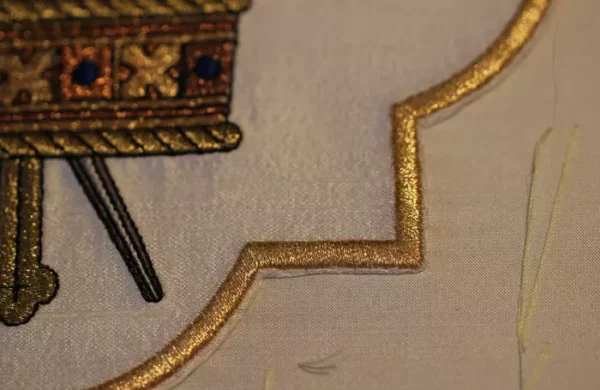
Quatrefoil Ecclesiastical Design – Part 2
The design worked in a quatrefoil border on silk dupioni, which will need to be applied to the base silk fabric….
Ecclesiastical Sewing is an ideal choice for quality liturgical fabrics, trims, and appliques. We work with the best manufacturers worldwide to bring you our handpicked selection of liturgical fabrics in a variety of colors, textures, and designs. Our fabrics range from rich brocades and silks to crisp cotton and linens, ensuring that we have the choice of material for every project and preference.
We know that quality materials are key to bringing your liturgical designs to life. That’s why we are committed to providing only quality materials for our customers. We carefully select our materials to ensure that they are not only beautiful but also durable. With our commitment to quality, you can trust that your finished products will withstand years with proper care.
In addition, our trims and appliques enhance intricate designs and fine craftsmanship, adding texture and dimension to any project. Whether you’re looking to create a new vestment or altar cloth, our selection of trims and appliques will take your designs to the next level.
Don’t wait any longer to elevate your liturgical designs. Shop with us today and experience the difference that quality materials can make. With our selection of liturgical fabrics, trims, and appliques, you’re sure to find the perfect materials to bring out your real ideas. Moreover, our commitment to quality ensures that your finished products will exceed your expectations. For an even more personalized touch, we also provide custom embroidery suggestions. Consider Ecclesiastical Sewing to assist you in fulfilling your liturgical dreams!

The design worked in a quatrefoil border on silk dupioni, which will need to be applied to the base silk fabric….
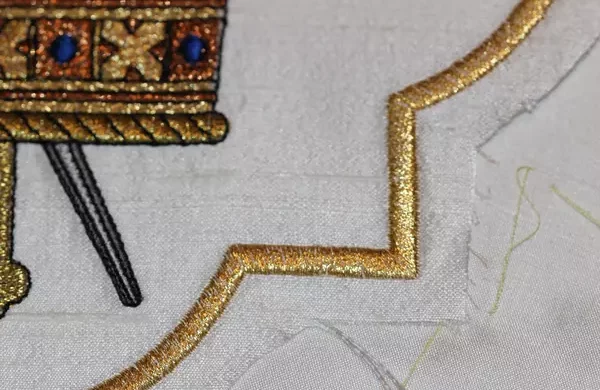
Applying the Ecclesiastical Machine Embroidery Design involves clipping corners, stitching, and turning the edge under. The motif is carefully stitched in place, ensuring a secure and neat attachment.
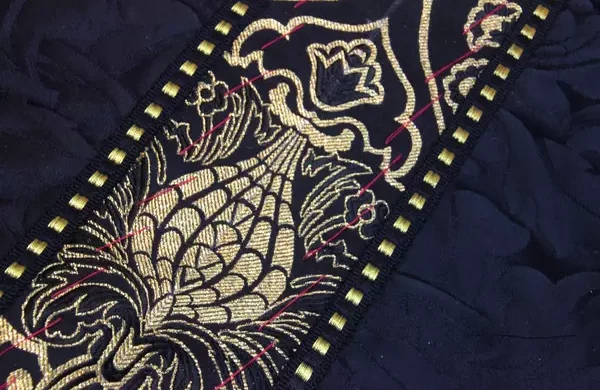
The orphrey trim for the chalice veil had been planned and cut to size and position based on the use of the black Passion Cross. The idea was to place the black motif on a gold motif so it would be more visible. The center of the orphrey was located and matched to the center of the design on the black Fairford Fabric.
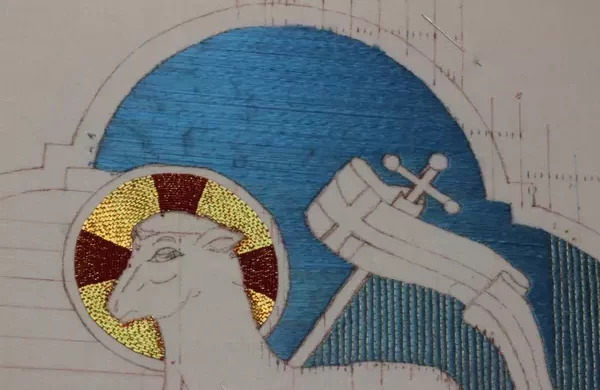
The Two Agnus Die projects for the Easter Set, the gold thread used for couching the blue silk sky is a Gilt Smooth Passing Thread size 4 with a silk core. The thread is imported from Access Commodities here in the States and is available from Hedgehog Handworks. The Gilt threads have 1/2% gold and are very nice to work with. The silk core makes the thread very pliable and so nice to plunge thread tails – an excellent goldwork thread.
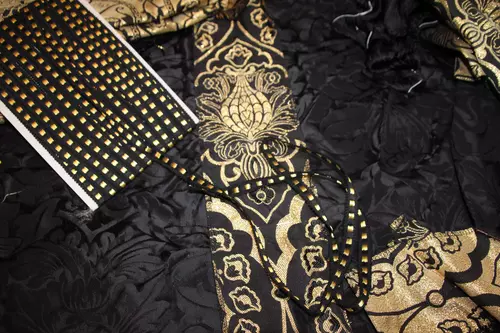
The Passion Cross – Church Symbolism by F.R. Webber
– This is a cross whose ends are cut to points. It is also known as the Cross Urdee, and the Cross Champain, sometimes the Cross Pointed. It represents the sufferings of our Lord and has been called by some authorities the Cross of Suffering. If pictured as rising out of a chalice, it represents our Lord’s agony in the Garden of Gethsemane. It may be used as a symbol of Maundy Thursday, or of Good Friday.
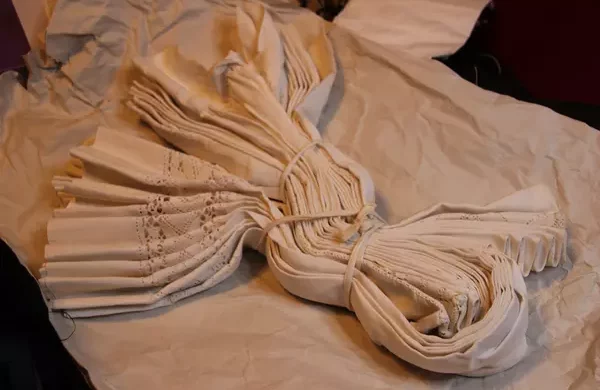
I’ll give you a hint: it is a linen fabric, and it is old. Any guesses as to what it might be?
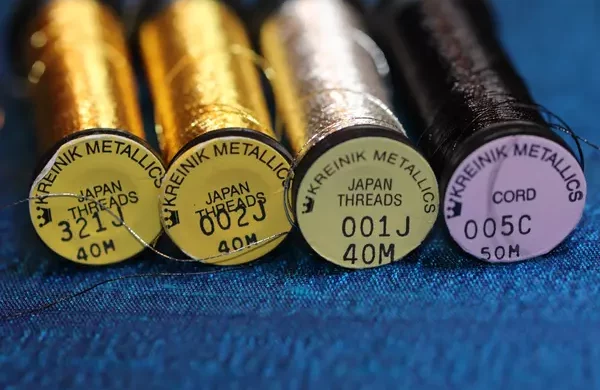
Ecclesiastical Embroidery and Vestment Projects,
– Improving faraway visibility in church embroidery can be tricky. Delicate silver thread on Angel Wings looks nice up close but might fade from a distance. Adding a black outline helps, but it raises concerns about muting the shimmer and blending with the blue background. Deciding between keeping the black for definition or adding more silver threads is a right choice in Ecclesiastical Embroidery.
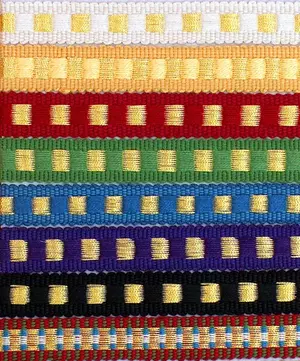
Sharing a vintage church embroidery design from the 1800s, still in the “rough draft” phase and the possibilities for church embroidery design are endless. On option is this versatile design could be used for whitework on altar linens or adapted for silk and gold threads on stole ends or maniples. Placing it in a quatrefoil frame makes it suitable for chasubles or burses. Stretching and elongating for a double oval ring offers options for stoles or chasubles. The design, enhanced with Dice Trim, can also adorn chasubles and dalmatics. The journey of creating ecclesiastical designs is ongoing, offering endless opportunities to learn and explore.
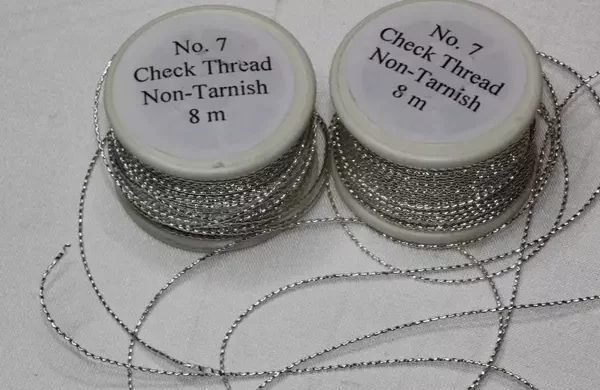
The ongoing Advent Vestment Set faces challenges in couching stitches. The Silver Check Thread, with its non-tarnish finish, offers a sparkle and shine in following curves, holding edges, and concealing stitches. Despite awaiting additional thread supplies, the emphasis remains on completion rather than rushing, with the Ecclesiastical Embroidery project.
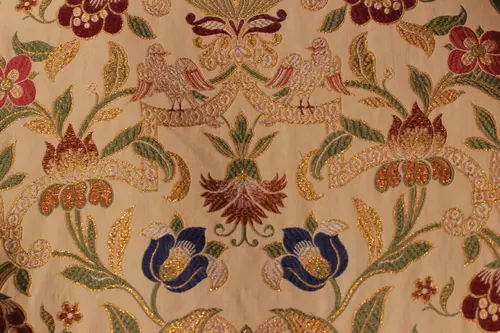
Ecclesiastical Sewing created Rose Vestments for Gaudete and Laetare Sundays. The set included an Altar Frontal, Pulpit Fall, Stole, Maniple, Chasuble, and optional Chalice Veil and Burse. Fabrics like Rose Florence Brocade and Verona Lurex Tapestry with symbolic bird motifs were chosen. The Altar Frontal featured intricate Ecclesiastical Embroidery. The Verona Tapestry’s rich design minimized the need for extensive embroidery, with selected trimmings completing the set.
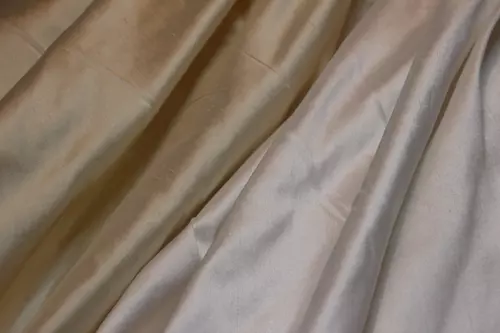
Choosing fabrics for Ecclesiastical Sewing involves factors like season, budget, and project duration. Silk Dupioni and cost-effective options suit various vestment pieces. True Ecclesiastical Fabrics like Fairford and Wakefield, though pricier, offer quality and durability. Their longevity justifies the investment, making the cost minimal over the Vestment’s service life.
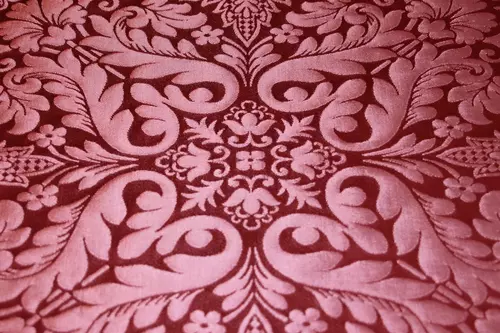
Pattern repeats in Ecclesiastical fabrics might sound scary, but fear not! Let’s take a lovely brocade, like the Florence from the UK. It’s got motifs like floral stars and stylized flowers. The key is the “pattern repeat.” For Florence, it’s 14 1/2″ both lengthwise and widthwise. So, if you start at a point on a motif and follow it until you hit the same point on the next identical motif, that’s one repeat. Simple! It’s like a beautiful puzzle waiting to be solved.
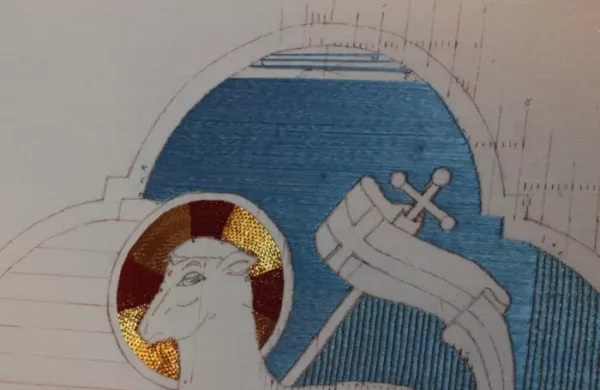
In the Agnus Dei Ecclesiastical Embroidery Project, significant progress has been made on the upper sky. Using long-laid stitches and horizontal guide marks, the detailed stitching maintains parallel and straight alignment. Frequent thread changes are necessary due to the 6 1/2″ stitch width, but the process speeds up as intricate details around the cross are left behind. The joy of completing a major portion of the sky-laid work is evident, with two-thirds now finished.
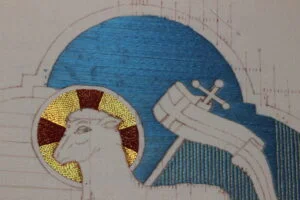
The update on the larger of the Agnus Dei pieces’ from The Tale of Two Lambs.
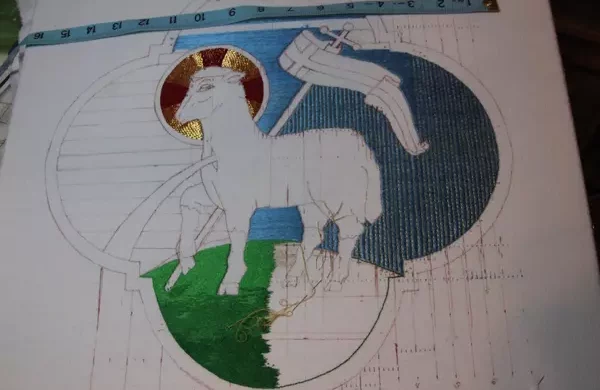
The Ecclesiastical Embroidery Design for the Altar Frontal features the largest Lamb, measuring about 15″ in width. The sky is stitched in Royal Floss, a vivid blue from the Belding Brothers Company. Goldwork details use #4 Smooth Passing with Silk Core from Access Commodities. The design aims for a bright and radiant sky, symbolizing the glorious Resurrection.
You must be logged in to post a comment.